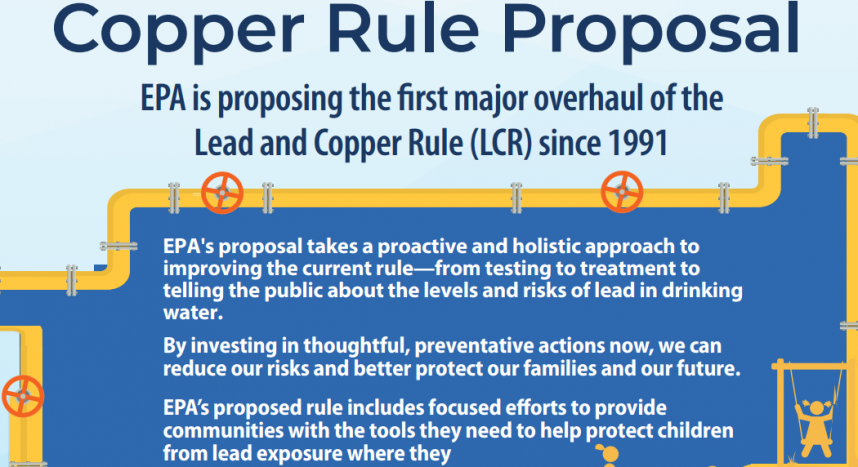Earlier this month, EPA released a series of proposed changes to the Lead and Copper Rule. Here are the major differences you should know about:
– Lead action level: The lead action level remains unchanged at 15 parts per billion (ppb), and systems testing at or above 15 ppb would be required to replace 3% of lead service lines (LSL) per year, which is down from 7% in the current rule.
– New trigger level: The agency is adding a new trigger at 10 ppb. Water systems testing between 10 and 15 ppb would be required to implement the following planning procedures: (1) evaluate corrosion control, and (2) set a goal for LSL replacements at a pace agreed upon between the community and the regulator.
– LSL replacement procedures: Cities must replace the portion of the LSL on public property within 3 months of a homeowner replacing the portion on private property. For every replacement, partial or full, the city is required to provide a filter and three months of cartridges.
– Inventory: To improve transparency, water systems must make a complete and publicly available inventory of lead service lines, including indicating unknown pipes, within three years of the rule changes.
– Testing: Changes to sampling requirements include mandatory testing at schools and daycares: 20% of schools and 20% of daycares in a community every year.
– Outreach: Systems are required to notify households testing above 15 ppb within 24 hours.
Comments will be accepted on these proposed changes through early December. You can read more about the issue on EPA’s website.

